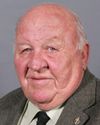The steps for drug recognition evaluation are as follows.
First, we take a breath sample to rule out alcohol as the primary cause of impairment. We then speak to the arresting officer to find out what the arresting officer saw at the scene.
Generally speaking, we're looking at half an hour to an hour before we get the subject before us, and the indicia may have changed. We then do a preliminary examination, where we take a pulse, estimate the size of the pupils, and see if the pupils track together to rule out a medical problem.
The fourth step is checking for horizontal gaze nystagmus again.
Now we're in a controlled environment where there are not going to be any distractions from traffic or persons. We go through the divided attention test again, that being the walk and turn, and standing on one leg.
We also add a test that's called a modified Romberg balance test, where you put your feet together, close your eyes, tilt your head back, and estimate the passage of 30 seconds.
The last is a finger-nose test, where the subject touches the tip of their finger to the tip of their nose, using instructions from the evaluator.
The sixth step is checking for clinical indicators, that is pulse again, blood pressure, and body temperature. We then move to a room that is capable of being darkened, so we can check the pupil size in room light, near total darkness, and then in direct light, by shining a penlight right in the pupil to see how it reacts and what size it constricts to. During that test, we check the oral cavity to see if there are any signs of ingestion, and also the nose. At the conclusion of that, we check for muscle tone, basically from the shoulder to the wrist, to see if the person is an injection drug user. During that, we'll take a third pulse.
At the conclusion of this, we can put the person into one or more of seven drug categories, or rule out drug impairment as the cause. If we believe the person is impaired by drugs, we will then interview the subject, pointing out what we've seen. In 99% of the cases, they admit to what we've called.
We then render an opinion and obtain the toxicology sample for forwarding to the lab for confirmation of the evaluation.











